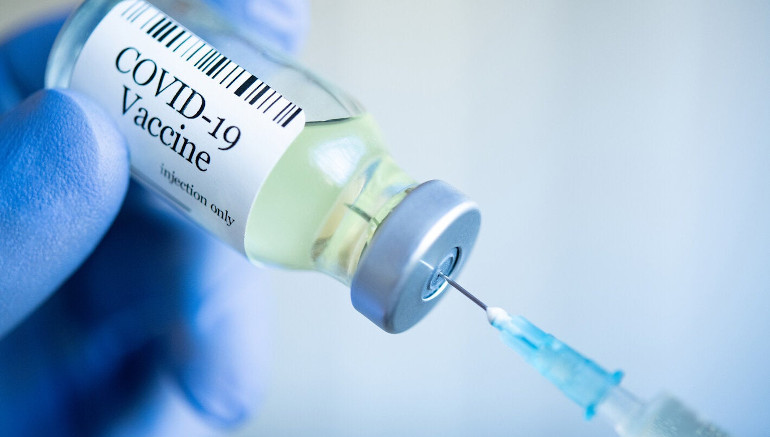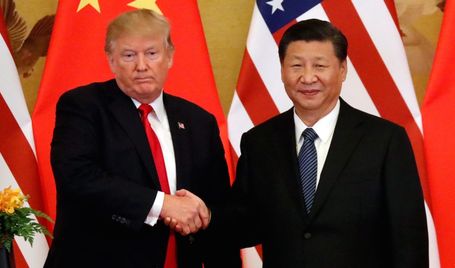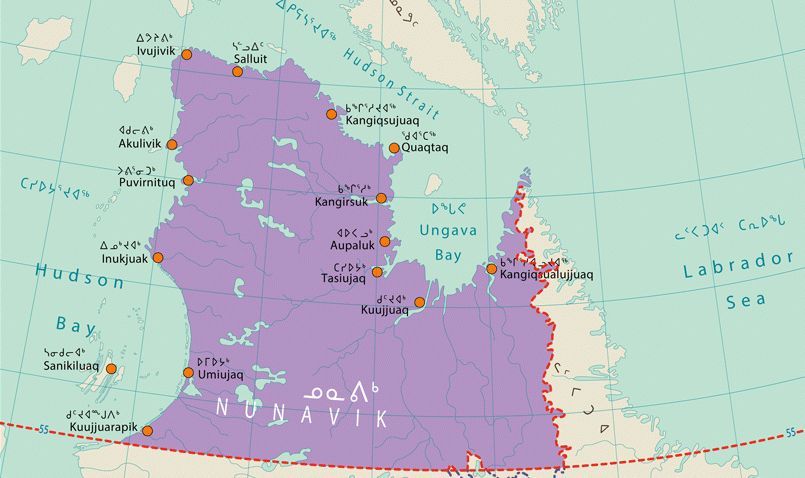The emergence of the Omicron variant of COVID highlights the ongoing failings of governments around the world to tackle this pandemic. Vaccine hoarding by rich countries, companies putting profit before human need, governments failing to do outreach to hard-to-reach and hesitant communities and people have all contributed to this ongoing misery.
The COVID pandemic drags on, now 21 months since it started in Canada. People are tired, frustrated, fearful and stressed. When will this end?
At the start, the overwhelming response was remarkable acts of solidarity. People participated in Personal Protection Equipment (PPE) donation drives, tried to follow healthcare guidelines and every evening saluted healthcare and essential workers from their windows, gardens and balconies. The news cycle ran stories of heroic nurses working to their breaking points and of grocery store workers: heroes ensuring our continuing access to food.
As of November 27, over 86 percent of Canadians twelve years old or more are fully vaccinated and over 89 percent are partially vaccinated. Vaccines are only now being rolled out for those between 5 to 12 years old. Including this age group, 80 percent of the eligible population is fully vaccinated. There are still around 3 million unvaccinated people over 12 years old, and most are not anti-vaxxers. The 7pm salutes are long gone, despite healthcare workers’ ongoing battle with the more infectious delta-variant.
A different and dangerous activity has appeared since the summer: thousands across Canada objecting to vaccine requirements. These activities built on the earlier anti-mask actions. In September, thousands took to Vancouver’s streets angry at vaccine rules. They blockaded hospitals including St. Paul’s, which delayed an ambulance from delivering a seriously injured construction worker to the emergency room. Anti-vaxxers disrupted Trudeau’s election meetings across the country. They have invaded schools and disrupted Remembrance Day. These actions attack overstretched health workers and teachers and can traumatize children.
How did we get here?
Years of neoliberal decay, growing inequality and cuts to essential services have undermined many individuals’ faith in governments and healthcare institutions. Almost every government around the world has failed to protect their population from COVID. Even wealthy countries with fairly good public health – such as Canada – consistently acted too little, too late and always deferred to big business. Years of cutting public health have meant that hospitals constantly operate at or near full capacity in normal times and the number of intensive care beds have been sharply reduced. In 1976 Canada had 4.99 acute beds for every 1,000 people; in 2018 it was only 1.96, one of the lowest numbers for any OECD country.
Since March 2020 there has been a dizzying array of public safety policy zigzags and contradictions on mask-wearing, social distancing and social gatherings. Measures were repeatedly rolled back to allow big business to continue making record profits, only to be reintroduced weeks into new waves that brought deaths and overwhelmed health workers. Various governments blamed individuals rather than admit to their own failings. They criticized young people and people of colour for infection spikes in these demographics, ignoring the over-representation of the young and the racialized in jobs that were “essential” and the employers who did not ensure physical distancing and other protections. Governments constantly let big corporate food processing plants, warehouses (including Amazon), big construction sites and manufacturing off easy, while hammering small businesses. Yet it was the big workplaces that spread COVID more.
COVID increased the tale of two Canadas, with growing inequality as the super-rich got even richer and many working people lost jobs and wages. Most Canadians, 53 percent, are $200 a month away from being unable to pay their bills, literally living pay cheque to pay cheque.
The blatant prioritizing of big business has fueled anger and distrust of Canada’s elites and their cherished institutions. This legitimate outrage pushed Canada’s mainstream parties to make mostly empty promises to tackle inequality and affordability during the 2021 election.
The right-populist Peoples’ Party of Canada fed off the discontent as Bernier railed against vaccine mandates, often repeating that “when tyranny becomes law, revolution becomes our duty.” In doing so, he gave a political platform to anti-vaxxers of all stripes, and dog-whistled the slogan of a white supremacist terrorist organization. In 2019, the PPC had nearly 300,000 votes; in 2021, it nearly tripled its support to over 800,000 or 5 percent of votes. The PPC’s best results were in Manitoba (7.6 percent), Alberta (7.4 percent) and Saskatchewan (6.6 percent).
Vaccine hesitant
Of the over 20 percent of not yet fully vaccinated Canadians, many are young children and there is still a significant number who are vaccine hesitant for various reasons.
Practicalities, language, lack of access to clinics and lack of sick pay are all reasons for hesitancy. Many people have a reaction to the vaccine, as with many vaccines, that lasts a few hours to a day. But many workers cannot afford to take a day off work to get the vaccine or to recover if they have a reaction. People in rural areas, without cars or who are not mobile, have problems getting to a clinic. Some have not gotten around to it or are just indifferent.
For people with serious medical conditions or living precariously or on the streets, vaccine hesitancy is rooted in fears that even a few days of feeling unwell after receiving the vaccine could result in very serious health outcomes.
Across Inuit Nunangat – the Inuit homeland across northern Canada – vaccination rates (as of July and August) ranged from 80 percent in Nunatsiavut to only 35 percent in Nunavik. Inuit historical memory and lived experience helps to explain this range. Inuit in the Nunatsiavut region, massively devastated by the 1918-19 Spanish Flu epidemic, are eager to get the vaccine while elsewhere Inuit remember the long-distance medical evacuations of the mid-century TB epidemic, often without patients’ consent. The traumatic TB treatment experiences has led to mistrust of the medical system, which employs few Inuit in professional roles and incorporates few Inuit values. The enforced starvation of Indigenous children and racism in the health system that continues today – witness Joyce Echaquan – make some Indigenous people suspicious of the health system. The forced sterilization and experiments about syphilis on Black people (the US Tuskegee Study) also leave a deep scar.
Some hesitate as they believe COVID vaccines have not had the standard clinical trials given their necessarily rapid rollout. However, all COVID vaccines in Canada have now had the standard three clinical trials as part of national approval processes. The speed of COVID vaccine testing was in part based on existing SARS and MERS research. The scale of the global pandemic ensured ample public funding, resulting in an accelerated vaccine roll out. The overwhelming majority of the medical community know that the benefit of preventing COVID far outweighs the small potential health risks.
Health authorities have shifted recommendations about the intervals between vaccines, based on vaccine availability and infection rates. While some shifts in policy are understandable given the emerging conditions of the pandemic, they have contributed to vaccine hesitancy.
Trying to boost vaccine levels: proof of vaccination requirements
Governments and big business want higher vaccination rates to get back to making profits. Most workers also want more people vaccinated to protect the lives of their families and friends, and to feel safer.
Most governments have introduced requirements for proof of vaccination to access certain non-essential services such as restaurants, cafés, bars and other indoor settings, as well as to travel on trains and airplanes.These have made workers and customers feel safer and have boosted the numbers going to restaurants, giving some relief to many small restaurants that have struggled for nearly two years.
More controversial are requirements to have proof of vaccinationin order to work; in some cases, there is a threat of dismissal and loss of income for those who are unvaccinated. The federal government announced that such workers will not be eligible for EI. These workplace mandates have been introduced by the federal government, and some provinces and private companies. Ontario and Québec retreated from mandating all health workers, fearful of staff shortages in the already over-stretched system.
Canadians support these mandates. In November, 70 percent thought that unvaccinated airline employees, schoolteachers, first responders and medical professionals should be fired. However, 28 percent, a significant number, oppose firing these workers.
Workplace mandates will certainly increase the rate of vaccination: the threat of losing a job is a real threat, especially with no unemployment payments. However, at what cost? Many will be bitter and angry – adding to alienation and providing a feeding ground for the far-right and neo-fascists who inhabit the fringes of the anti-vaxxers.
Introducing proof of vaccination requirements in workplaces or for accessing non-essential services is easy, but such blanket measures are combating COVID on the cheap and will hit the poor the hardest. The working class and labour unions must organize to ensure equitable access and enforcement.
As any parent or teacher knows, explanation, persuasion and encouragement are far better motivators than discipline and threats. The main action needed to increase vaccine uptake is explanation, extensive outreach to hard-to-reach communities, encouragement and answering doubts. However, this is more expensive than threats, as it means employing people; governments want to get people vaccinated as cheaply as possible, so that corporations can get back to their core business making profits for the rich. Governments continue to push their narrative of individual responsibility to avoid looking at the multiple failures of government and big business.
Persuasion and explanation work. The Globe and Mail reported that Wellesley Central Place care home achieved 100 percent vaccination of its 143 staff, by these methods. Even more striking is northeast Calgary, where 99 percent of eligible adults had at least one shot by mid-November, compared to the province-wide rate at the same time of 79.3 percent. A year ago, this area was hit hard with COVID and Premier Kenney, a right winger, made racist comments about the high COVID rate in the South Asian population. A large part of the population had “essential” jobs that couldn’t be done from home such as in warehouses, distribution, trucking, care homes, etc. and many used public transport. The successful vaccination drive was based on extensive outreach, use of 72 different languages, extended hours and pop-up clinics and worked with 254 organizations.
What socialists think
We need a collective effort and sense of responsibility to stop the COVID pandemic, rather than individual blaming. As a result, all eligible people, irrespective of profession or status, should get vaccinated against COVID, provided reasonable timelines to do so and exemptions for few legitimate medical reasons. Socialists oppose the rights of otherwise eligible individuals to refuse to be vaccinated for reasons of “personal liberty” when doing so threatens public health. Conservative MPs, with their talk of “choice,” trying to pull support from the PPC, have not helped.
There is a clear public health need for requiring healthcare workers and workers in other sensitive or essential workplaces to be vaccinated in order to protect themselves and their patients. But socialists don’t trust bosses to enforce vaccine mandates on their employees, as this could too easily be used as a tool of repression or retaliation against the workers. Many bosses have, throughout COVID, sacrificed workers’ safety to boost profits. The workers themselves, through their union or other democratic representatives, should negotiate and implement all mandatory vaccination policies in their workplaces. Wherever possible, alternative forms of work, including working from home, should be considered. Rigorous testing of unvaccinated workers might be part of a plan that would ensure the safety of the workplace. Workers’ representatives must be involved in any decisions to discipline individual workers who refuse to follow mandatory vaccination policies.
Acknowledging the right of unions to enforce vaccine mandates in their workplaces, we call on all unions to take seriously the need to achieve full vaccination of their members and to support mandatory vaccination policies, where necessary, to protect public health.
We firmly support the need to achieve full vaccination as soon as practicable but relying on blunt enforcement of blanket vaccine mandates will likely backfire among the hesitant, and even push some of them into the arms of the anti-vax movement, with its neo-Nazi links.
The example of northeast Calgary should be repeated across the country. A well-funded public health information campaign: in communities, schools, universities and union halls, would contribute to individuals’ sense that they have all the correct information before getting the vaccine and help to build trust and understanding in the positive benefits of vaccination.
Information on vaccines needs to be easily available in a multitude of languages and emphasize the liberating social opportunities that come with having the universal right to be vaccinated. Communication about pandemic strategies needs to be open and transparent, including on the need to protect our healthcare workers.
Governments and public health bodies need to make it as easy as possible for everyone to get vaccinated; this means providing free transit in urban areas and between rural and urban areas to facilitate access to clinics. The use of pop-up clinics in public spaces must be expanded, even in small communities, to prevent the further isolation of remote communities. Universal paid time off and paid sick days to get vaccinated and to recover from the vaccine’s immediate side-effects is vital.
Proof of vaccination must be simple to acquire and present, including for those without smart phones. Translation services must be used to communicate with anyone, especially elders, who are not fluent in French or English.
We support mandatory vaccination policies for non-essential activities like high-capacity indoor events. However, we oppose measures that would prevent people, wearing masks, from accessing grocery stores, pharmacies, public transit, or other essential activities. We also recognize that in Indigenous communities, room has to be made for Indigenous values, decision-making and collective enforcement.
Vaccines alone are not enough
Vaccines need to be seen from a global perspective, given the global pandemic. Vaccines protect against COVID, with unvaccinated patients making up the vast majority of hospitalizations and intensive care patients. However, on their own, vaccines are not enough. Myopically relying on vaccines, wealthier nations largely ditched public health measures to restore business-as-usual, only to get hit by a new wave of the delta variant. Boris Johnson’s “Freedom Day” and Kenney’s “Best Summer Ever” both ensured COVID was not under control. Especially indoors, masks, good ventilation and physical distancing are important protections. Rapid testing and well-funded public healthcare are essential in combating the pandemic, as the virus can infect and continue to mutate into new variants while spreading through vaccinated populations.
Over 8 billion vaccines have been administered globally as of early December, but less than 3 percent of people in low-income countries have are fully vaccinated. Many rich nations are blocking low- and middle-income countries from making their own doses, by upholding vaccine patents or holding up key supply exports. Thus, global vaccine distribution is relying on COVAX’s catastrophic “trickle down” charity model. Canada, whose vaccine hoarding has been condemned by the World Health Organization for prolonging the global pandemic, bought enough shots to vaccinate its population 5.2 times over! The federal government must abolish vaccine patents, lobby for this internationally and export its vaccine surpluses to ensure greater access internationally – the only way to stop the pandemic.
Governments’ focus on individual responsibility can foster a tendency for the vaccinated to blame their unvaccinated neighbours or workmates for prolonging the pandemic, but that undermines workers’ unity and solidarity, and abrogates our collective responsibility for creating a society in which everyone can have confidence in our public health institutions and the information they provide.
A workers’ program for COVID-19
A person gets lost in an unfamiliar neighbourhood and asks a local resident for directions. The local resident replies, “I’ll tell you how to reach your destination, but I wouldn’t start from here!”
At the start of the pandemic Socialist Alternative Canada laid out the measures needed for a pandemic response putting public health before the economy and private profit. We called for the public ownership of all companies producing vital medical equipment and drugs to speed up the provision of PPE and other vital supplies without profiteering, in contrast to Trudeau’s sluggish policy of politely asking private companies to provide supplies while people lay dying. This measure would have allowed the rapid establishment of mass testing and the necessary medical supplies for the overwhelmed health sector. Bringing all private clinics and care homes into the public system, with union rates of pay, would have invested funds in supplies, physical distancing and ventilation, and saved lives, instead of lining private owners’ pockets. Taking emergency action to provide clean water, health facilities and isolation facilities on all reserves and isolated communities would have provided people with the services many urban dwellers take for granted.
Tragically, the lack of PPE, working conditions in compliance with health authority guidelines, regular testing and protecting workers’ rights to refuse unsafe work led to deaths in Alberta’s slaughterhouses.
All workers, whether laid off, quarantined, self-isolating on reduced hours, self-employed without work or caring for others, needed a guaranteed income – an expanded CERB. More support was needed for small businesses. Support to big business, like CEWS, should have come with qualifications and accountability mechanisms to ensure the money was used to maintain employment, rather than to boost profits and dividends. Corporations should have extended hazard pay beyond June 2020. Those that received bailouts ought to have been taken into public ownership, giving the public a return on its investment by reinvesting profits into much needed services.
There was a temporary eviction moratorium in many provinces, but accumulated rent debt was never forgiven, meaning that once the moratoriums lift, many will be on the hook for back rent they can’t afford to pay. There should have been a rent waiver for tenants and a mortgage waiver for owners. Empty buildings and hotels should have been used to house the homeless and over-crowded, and quarantine spaces; instead, many hotel workers were laid off.
Nationalizing the big phone and internet companies to provide a universal, low-cost public service, free during COVID, would have helped isolated people stay in touch during the social isolation due to COVID, and would have made remote learning more accessible for all students.
Canada should have pre-ordered enough vaccines for its population, but now widespread vaccine hoarding is catastrophic for global pandemic control and risks spreading even more infectious and deadly new variants. Canada needed to take big pharma into public ownership and abolish vaccine patents.
The democratic control by workers and communities would have ensured important public conversations, with strong healthcare provider voices, about timely public health measures including masking requirements, protecting workers’ safety, combating the mental health pandemic and now the collective need for all eligible individuals to get vaccinated. It would have also cut across divisions in the workforce between the vaccinated and hesitant.
All these measures – a collective, working-class approach to tackling the pandemic – would have prevented the many blunders and the deepening inequality spurred on by COVID.
While it is now too late to implement this workers’ program in March 2020, the future has many more global crises in store for humanity, whether viral or bacterial, human or climate-based. New COVID variants are posing more challenges. It is not too late to fight for a socialist future in which workers’ planning and control of the economy better prepares us to respond to these crises. The time is now.




